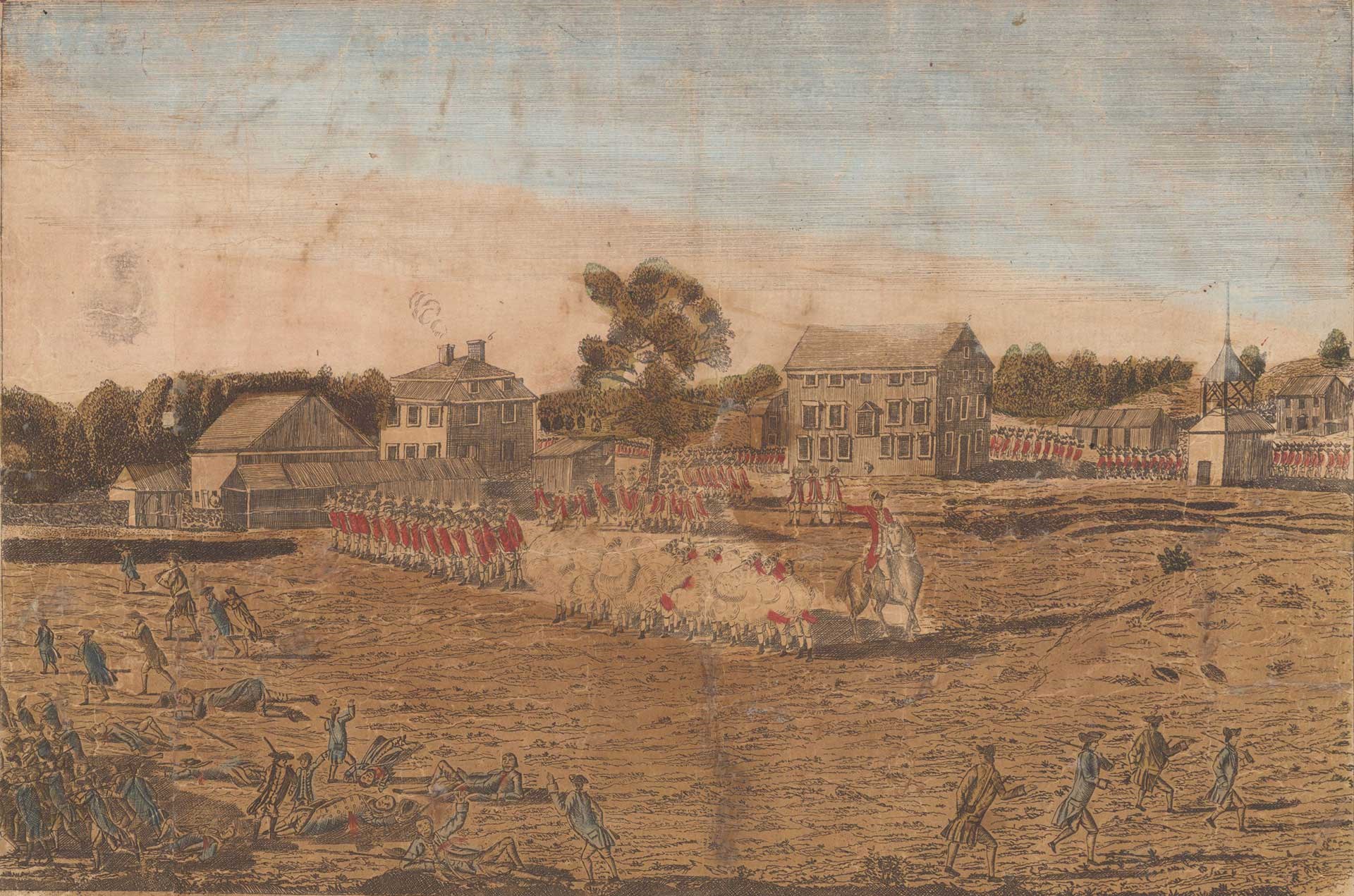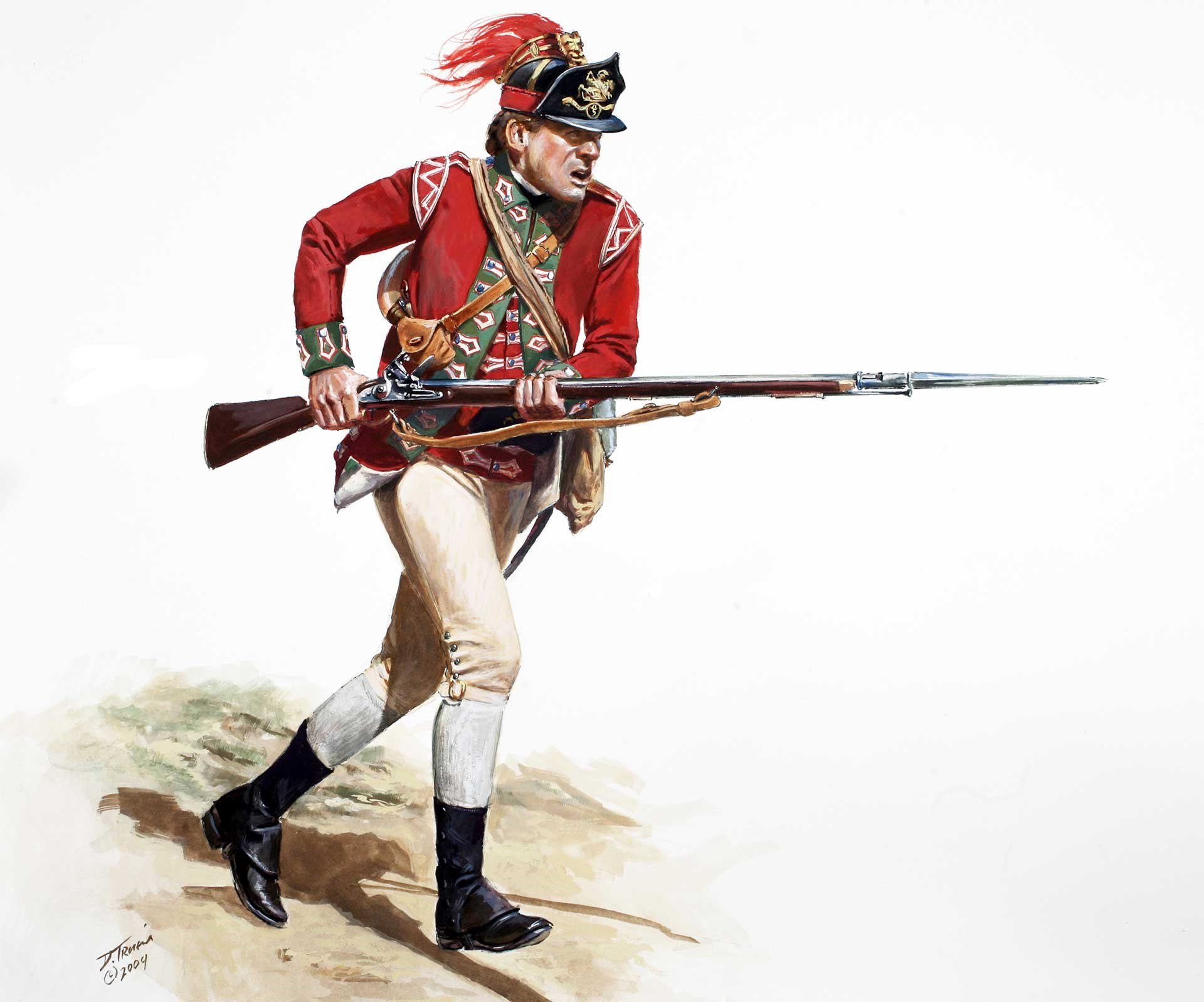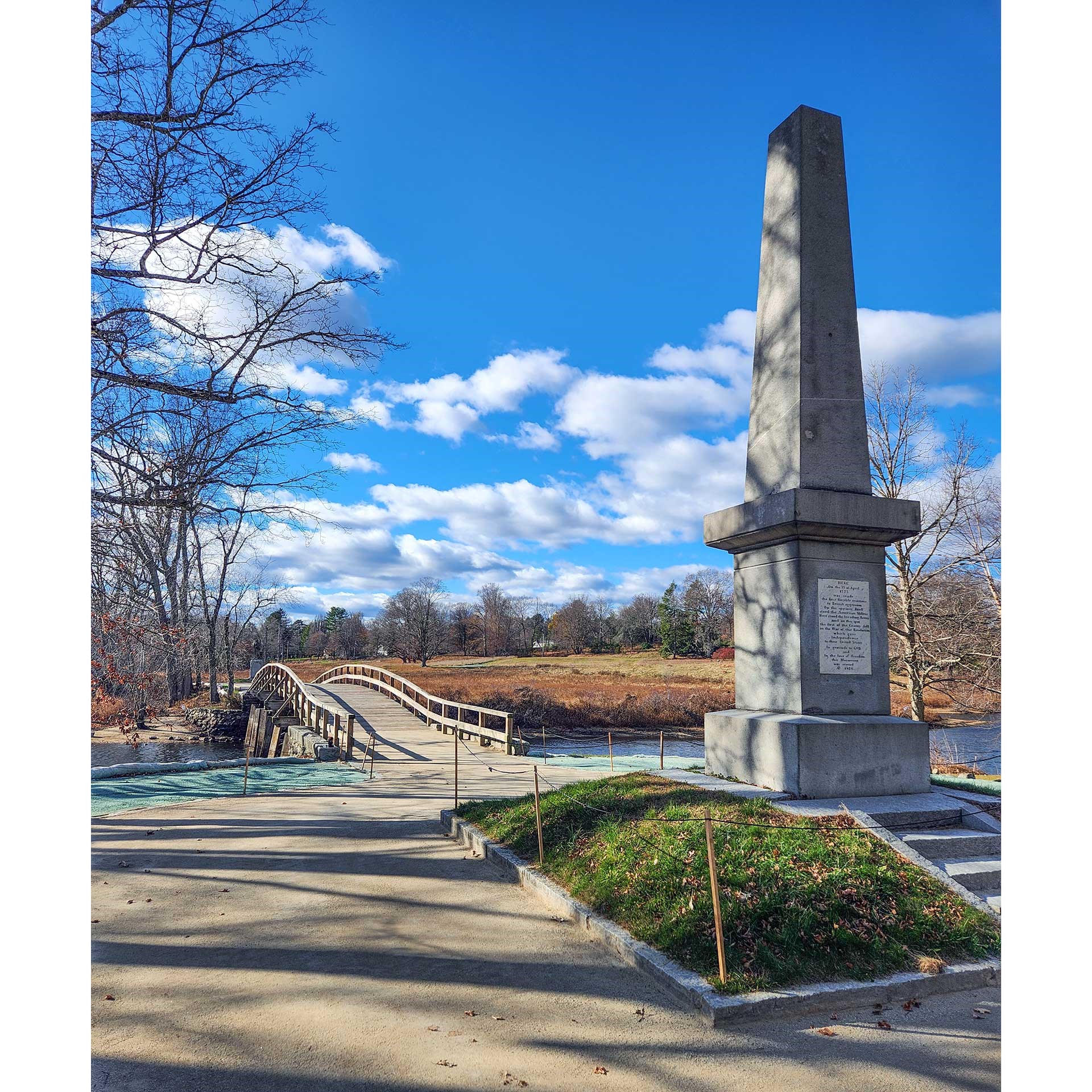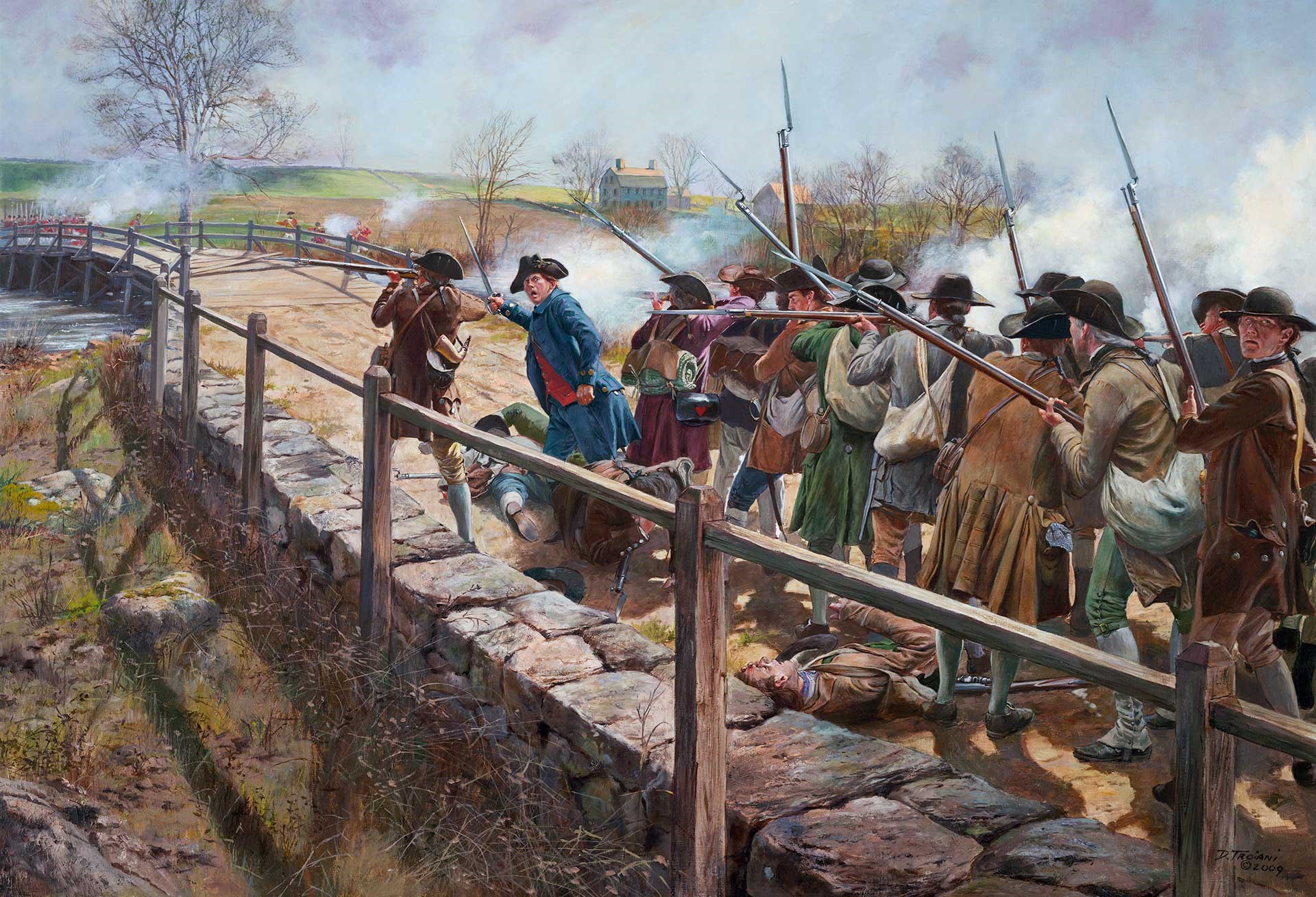Lexington Green today is a surreal place. If one didn’t know any better, one might mistake it as a simple suburban park, no different than any of the other carefully manicured havens of nature preserved among the sprawling network of roads, shops and houses that characterize many of America’s rapidly growing urban areas. A constant drone from the passing cars breaking off Massachusetts Avenue onto Bedford Street disrupts any sense of calm, even to early-morning visitors who tread the field, hoping to gain some semblance of atmosphere resembling the quiet dawn of April 19, 1775. However, on hallowed ground, there always seems to hang an intangible sense of solemnity, some weight on the soul that tells visitors there is more than air and soil in that place. The threads of fate wound their way through Lexington Green beginning a chain of events that would birth the greatest nation the world has ever known. And it began with a gunshot.
Much conjecture surrounds that fateful first shot, fired by an unknown aggressor within the vicinity of the village green. Naturally, the accounts of the surviving militiamen and witnesses contend that the British fired first, with several men recording in their depositions that an unnamed British officer fired a shot from his pistol, after which a scattered volley was fired by the British light infantry. Of course, British reports from the same event contend that the colonials fired the fateful shot. Major John Pitcairn, the commander of the six advance companies that filed onto Lexington Green that morning, recorded:
“…when I arrived at the end of the Village, I observed drawn up upon a Green near 200 rebels; when I came within about 100 yards of them, they began to file off towards some stone walls on our right flank. The Light Infantry, observing this, ran after them. I instantly called to the soldiers not to fire, but surround and disarm them, and after several repetitions of those positive orders to the men, not to fire, etc. some of the rebels who had jumped over the wall fired four or five shots at the soldiers, which wounded a man of the Tenth and my horse was wounded in two places, from some quarter or other, and at the same time several shots were fired from a meeting house on our left. Upon this, without any order or regularity, the Light Infantry began a scattered fire, and continued in that situation for some little time, contrary to the repeated orders both of me and the officers that were present.”

Captain John Parker, commander of the Lexington militiamen, is alleged to have told his men, approximately 80 of whom had mustered on the green, to stand their ground. The words attributed to him are, “Don’t fire unless fired upon, but if they mean to have a war, let it begin here!” These words, immortalized in stone on the Battle Line Boulder monument on Lexington Green, come not from Parker himself but a recollection of William Munroe nearly 50 years after the event. In fact, less than a week after the events at Lexington, Parker left a deposition on what occurred. In his words, this is how he described that morning:
“I, John Parker, of lawful age, and Commander of the Militia in Lexington, do testify and declare That on the 19th Instant, in the Morning, about one of the Clock, being informed that there were a Number of Regular Officers riding up and down the Road, stopping and insulting People as they passed the Road, and also was informed that a Number of Regular troops were on their March from Boston, in order to take the Province Stores at Concord, ordered our Militia to meet on the Common in said Lexington, to consult what to do, and concluded not to be discovered, nor meddle or make with said Regular Troops (if they should approach) unless they should insult or molest us and upon their sudden Approach I immediately ordered our Militia to disperse and not to fire. Immediately said Troops made their appearance and rushed furiously, fired upon and killed eight of our party, without receiving any Provocation therefor from us.”

In any event, what occurred on Lexington Green in the early morning hours of April 19, 1775, cannot rightly be called a “battle.” Both British and militia accounts generally agree that, when the firing began, the Lexington militia was in the process of dispersing, and several of the men who were wounded in the subsequent shooting were shot through the back, suggesting that they had been facing away from the British line when the firing began. After the smoke cleared, eight men from Parker’s militia company lay dead. Ten more were wounded. Regardless of the true sequence of events, the conclusion was the same. For the first time, a confrontation between armed American colonists and British soldiers had resulted in American deaths, and unlike the provocations of the past, this time, American colonists were prepared to sustain a fight for retribution.
The details of the arms used on April 19, 1775, much like the true nature of what occurred that morning, have largely been glossed over and wrapped into larger myths outlining, in broad strokes, shrewd American riflemen facing off against incompetent British automatons marching in line and column as if on a European battlefield. In fact, the reality of April 19 seems to be entirely contrary to that perception. Several archaeological expeditions have been undertaken in recent years to uncover the surviving evidence from the fights at Lexington, Concord and along Battle Road. To date, none of these surveys have recovered projectiles fired from a rifled bore. Also of note is that, of the surviving arms extant that are documented to have been used on April 19, 1775, none of the guns are rifles. Additionally, it is worth noting that, even though several arms with documented provenance dating to the events at Lexington and Concord were later converted to percussion ignition, no such mechanisms existed in the 1770s. Every single firearm on the field at Lexington and Concord was a flintlock muzzleloader of one type or another. Of the arms that have survived and are documented to have been used that day, they can largely be grouped into a few main categories:

Colonial Fowlers
In 1770s New England, the dominant civilian arm used for hunting and militia service was the fowler, so named because such arms could be loaded with shot and used for hunting fowl or other small game. Additionally, fowlers could also be loaded and fired with larger round balls when hunting medium-size game or being used for militia service. To facilitate the use of both shot and ball, fowlers had smooth bores instead of rifled bores, a configuration that not only allowed for various kinds of ammunition but was also significantly easier, and therefore less expensive, to produce. Civilian fowling pieces, due to their commercial and personal nature, varied widely in terms of their configuration, barrel length and bore size. Guns being used for militia service were required to have a certain barrel length (noted in some records as being at least 36”) to account for the fact that soldiers firing in a rear rank would require a gun long enough to reach past the men in the front rank without endangering them. Many New England fowlers of the period had extraordinarily long barrels, too, with some of them reaching 55” or more in length. Bore sizes varied, too, with guns ranging from below .50 caliber and exceeding .80 caliber, in some cases. Generally speaking, most New England fowlers had bore sizes around .62 caliber, and many recovered musket balls fired on April 19 are of a size that suggest they were fired from .62-cal. muzzleloaders.

French Military Muskets
Following the Massachusetts Powder Alarm in September 1774, colonial leaders began amassing more “war-like stores” in preparation for a military confrontation with Great Britain. Militia companies began drilling more regularly, and more attention was being paid to the adequate arming and outfitting of militiamen. Every man between the ages of 16 and 60 was required to perform militia service, and for those who weren’t able to supply their own firearms or who had inferior or unserviceable arms, provisions were made to supply them with an adequate substitute. Many towns and counties likely purchased older French Model 1728 muskets that had been captured and sold following the French & Indian War. The Model 1728 was a military arm and represented one of the first standardized infantry longarms made in large numbers by the French government, with more than 375,000 produced from 1727 to 1746. These guns were produced with a 46” barrel that had a .69-cal. bore size, which would remain the standard musket bore size for the French military going into the 19th century and would also be standardized later by the Continental Army.
Military muskets differed from civilian fowlers principally due to the ability of the former to mount a triangular socket bayonet. Most civilian hunting arms were stocked up to the muzzle, preventing them from mounting a bayonet. Some surviving fowling pieces display forestocks that were cut back to allow for the mounting of a bayonet during militia service.

Committee Of Safety Muskets
Aside from purchasing and stockpiling existing arms for militia use, Committees of Safety also made efforts to encourage the production of domestic arms based largely on existing military guns. These often made use of a mix of surplus components from both military and commercial sources. The resulting guns are known today as “Committee of Safety” muskets, and very few such arms survive today with verifiable provenance to the events of April 19, 1775. The existence of these rare survivors, though, illustrate that at least a few men were equipped with domestically produced military arms intended for militia service. These guns tend largely to be based on the existing British Brown Bess pattern of military service musket, having bores in the .75- to .80-cal. range and featuring several inches of exposed barrel behind the muzzle to accommodate socket bayonets. Due to the secretive, discreet manner in which such guns were made, very little period documentation exists in relation to such arms, as local gunmakers generally wanted to obfuscate any ties between them and arms intended for use against British troops.

British “Brown Bess” Land Pattern Musket
Unlike the discordant nature of colonial armament, the British army of 1775 was well-standardized in terms of longarms. For several decades prior to the outbreak of war, the standard British infantry arm was officially called the “Land Pattern” musket, to distinguish it from small arms in use by the Royal Navy (i.e. Sea Service muskets). The soldiers who carried it, though, called it “Brown Bess,” a colloquial name that survives to the present day. By the mid-1770s, though, existing Land Pattern muskets began to be differentiated into older Long Land Pattern muskets, which were outfitted with 46” barrels, and newer Short Land muskets of the 1769 pattern, which had a 42” barrel and saw use with light infantry units in April 1775.
Regardless of length, all Brown Bess muskets had a smoothbore barrel of approximately .75 caliber. To facilitate easy loading and mitigate problems with blackpowder fouling, British infantrymen were issued with paper cartridges containing a .69-cal. lead ball. The space between the interior walls of the barrel and the outside of the projectile when loaded is a distance called “windage,” and the greater the windage, the more inaccurate the firearm would be in the hands of an individual soldier. British firepower doctrine of the 1770s prioritized massed volleys of musketry that would send swarms of musket balls hurling toward the enemy, while the individual soldier in ranks wasn’t expected to do much more than aim their musket toward an enemy line and fire upon command.

However, by the 1770s, British light infantry doctrine had developed tremendously since earlier British experiences in North America, and on that fateful morning at Lexington Green, militiamen faced off not against regulars of the British line regiments but six flank companies of British light infantrymen who were trained in an entirely different style of warfare than their fellow soldiers in the line. These men were expected to fight in an irregular way, taking advantage of terrain and natural obstacles while working in pairs and on their own initiative, taking carefully aimed shots at targets of opportunity. The nature of the light infantry’s smoothbore Brown Bess musket and the windage introduced by the British army’s choice of sub-caliber projectile meant that aimed shots could not be expected to hit man-sized targets with any regularity beyond a relatively short distance, certainly no more than 75 to 100 yards. However, the evolution of light infantry doctrine would necessitate the development of more capable longarms, which would emerge later during the war in America.
Following the massacre on Lexington Green, the British column finished its march to Concord, where it completed its mission in uncovering and destroying munitions and supplies. However, to guard against any militia incursions during the operation, several grenadier and light infantry companies were sent to guard the north and south bridges that provided access to the town of Concord. As the British burned the uncovered stores, smoke swirled above the town, causing gathering militiamen near Concord’s North Bridge to believe that the British were burning more than supplies.

“Will you let them burn the town down?” Joseph Hosmer asked of his commander, Col. James Barrett of the Middlesex Minutemen. For the approximately 400 men who gathered atop Punkatasset Hill overlooking Concord’s North Bridge, it wasn’t clear what the right move ought to be. None of them knew that men lay dead on Lexington Green. For them, no war had begun. As the 64-year-old Barrett quietly considered his options, Capt. Isaac Davis of the Acton militia said, “I haven’t a man who is afraid to go.” Capt. William Smith of Lincoln said his men were ready to push the British out of Concord. With those assurances, Barrett ordered his men to load their muskets and change gun flints to ensure that their locks would spark reliably when the trigger was pulled. Then the assembled companies began their march down the hill toward Concord’s north bridge.
Captain Walter Laurie, commanding the three companies of British light infantry at the bridge, immediately ordered his men to retreat to the opposite bank as the militia column descended from the heights. As he barked out orders to the light infantrymen, the colonial militia closed on the bridge. Finally, when the head of the militia column came within about 80 yards of the British position, a shot rang out, the “shot heard round the world” immortalized by Emerson. From all accounts, it was a British light infantryman who had fired it. “I imagine myself that a man of my own company did first fire his piece,” Laurie later recounted. His instinct was supported by another British officer, Lt. John Barker of the 4th Foot, who wrote, “The fire soon began with a dropping shot on our side.” Three more shots rang out from the British light infantry, with all three landing in the river beside the bridge, sending sprays of water skyward.

“Fire, for god’s sake, fire!” cried out Maj. John Buttrick of Concord. It was the first command ever given to American troops to shoot at British infantry, and with those words, a ragged volley exploded from the militiamen. The musket balls swarmed toward the British light infantrymen, and after the smoke cleared, several lay dead and nine were wounded. The British hastily retreated toward Concord, but they had taken their own toll on the advancing militiamen. Four men suffered wounds, and two men were killed, including Capt. Isaac Davis, who had encouraged Barrett to march forward without fear.
For the first time, Americans were truly fighting against a foreign power, a reality made starkly apparent by the early morning massacre on Lexington Green. Following the fight at Concord Bridge, hundreds and then thousands of militiamen descended on the retreating British infantrymen, turning the day into a running gunfight that lasted until dusk and stretched from the town of Concord to the outskirts of Boston.
April 19, 1775, marked the first day of a long war that would end more than eight years later with British recognition of an independent American nation that would go on to be an example to the world, providing a haven for liberty-loving individuals with a capacity for self-governance and self-determination. That reality was made possible by a few courageous, well-armed men in Massachusetts willing to fight and die for their liberty.
Read the full article here

